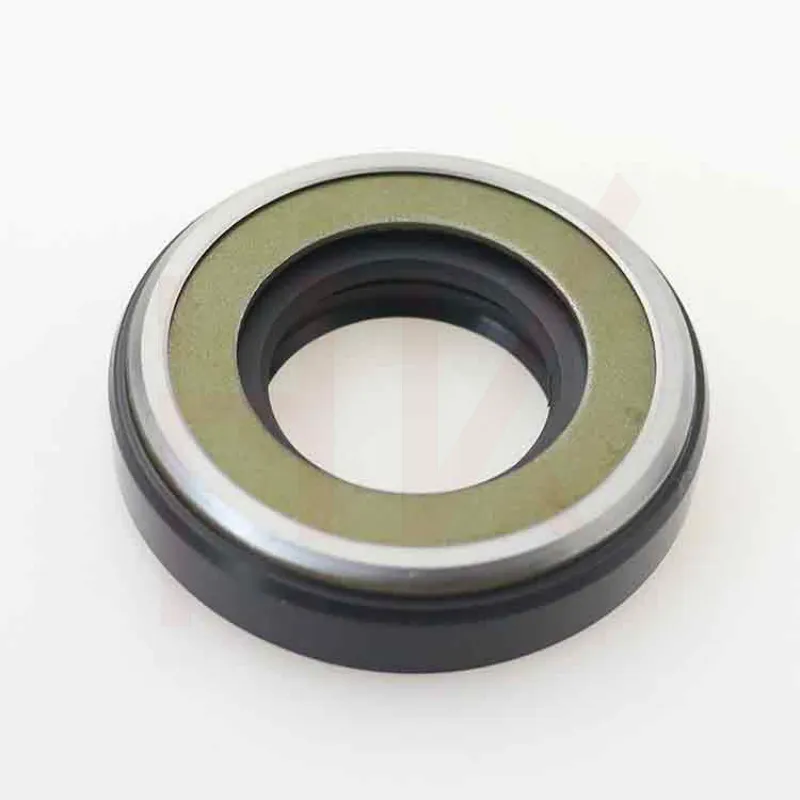Dec . 16, 2024 13:08 Back to list
metal clad wiper seals
Metal Clad Wiper Seals A Comprehensive Overview
Metal clad wiper seals are specialized components integral to many engineering applications, particularly where fluid containment and environmental protection are crucial. These seals offer robust solutions to mitigate contamination and prevent leakage, making them indispensable in various sectors such as automotive, aerospace, industrial machinery, and hydraulic systems. This article delves into the construction, function, advantages, applications, and future trends of metal clad wiper seals.
1. Construction and Materials
Metal clad wiper seals consist of a flexible sealing element, typically made from elastomers, and a metal casing that provides structural integrity. The elastomeric part is usually crafted from materials like nitrile, polyurethane, or silicone, chosen for their resistance to wear, temperature, and chemical degradation. The metal component, often made from stainless steel or a similarly durable alloy, acts as a protective shield around the elastomer, enhancing its lifespan and overall performance.
The design of metal clad wiper seals can vary significantly based on their intended application, with different shapes and profiles tailored to specific requirements. For instance, some designs focus on maximizing contact with the sealing surface to improve retention and prevent ingress of contaminants. Others may incorporate features like lips or grooves to enhance sealing capability further.
2. Functionality
The primary function of metal clad wiper seals is to protect moving parts from external contaminants such as dirt, dust, and moisture while preventing lubrication loss. In hydraulic or pneumatic systems, these seals play a vital role in ensuring that hydraulic fluids or gases remain contained, thereby enhancing efficiency and safety.
When installed at the interface between fixed and moving elements, wiper seals operate in a continuous environment fraught with challenges. They must withstand not only the friction generated by moving components but also exposure to extreme temperatures and pressures. The inherent flexibility of the elastomer combined with the rigidity of the metal casing allows these seals to maintain an effective sealing action while accommodating slight misalignments or variations in component surfaces.
3. Advantages
The benefits of employing metal clad wiper seals are manifold. Firstly, their hybrid construction provides a superior combination of elasticity and strength, ensuring a longer service life compared to standard rubber seals. This longevity translates into lower maintenance costs and reduced downtime, which is particularly valuable in industrial processes where efficiency is paramount.
metal clad wiper seals

Secondly, metal clad wiper seals exhibit excellent resistance to a variety of harsh conditions, including extreme temperatures, chemical exposure, and abrasive environments. Their robust design makes them suitable for heavy-duty applications where traditional sealing solutions may fail.
Additionally, the presence of a metal outer casing minimizes the risk of damage during installation and operation, making them ideal for use in rugged environments. The metal casing can also aid in heat dissipation, which is beneficial in high-speed or high-pressure applications.
4. Applications
Metal clad wiper seals are utilized across a wide array of industries. In the automotive sector, they are found in power steering systems, shock absorbers, and various transmission components, where they help maintain the integrity of fluids and protect against external contaminants.
In aerospace, these seals are crucial for ensuring the reliability of hydraulic systems in aircraft, where failure could have catastrophic consequences. Their use in industrial machinery is also prominent, particularly in heavy machinery, robotics, and conveyor systems, where wear and tear from dust and debris can lead to significant operational disruptions.
5. Future Trends
As industries continue to advance, the demand for more efficient, durable, and reliable sealing solutions will grow. Future developments in metal clad wiper seal technology may include the incorporation of advanced materials that offer higher performance characteristics, such as better chemical resistance or enhanced elasticity.
Moreover, the integration of smart technologies, such as sensors that monitor seal performance or wear, could revolutionize maintenance strategies, allowing for predictive maintenance practices that minimize downtime and enhance operational efficiency.
Conclusion
Metal clad wiper seals represent a critical innovation in sealing technology, combining the best of both elastomeric and metallic materials to deliver exceptional performance across various applications. Their ability to withstand harsh conditions, coupled with longevity and reliability, makes them a preferred choice in many industries. As new materials and technologies emerge, the future of metal clad wiper seals looks promising, paving the way for even greater advancements in sealing solutions.
-
TCN Oil Seal Metal Ring Reinforcement for Heavy Machinery
NewsJul.25,2025
-
Rotary Lip Seal Spring-Loaded Design for High-Speed Applications
NewsJul.25,2025
-
Hydraulic Cylinder Seals Polyurethane Material for High-Impact Jobs
NewsJul.25,2025
-
High Pressure Oil Seal Polyurethane Coating Wear Resistance
NewsJul.25,2025
-
Dust Proof Seal Double Lip Design for Construction Equipment
NewsJul.25,2025
-
Hub Seal Polyurethane Wear Resistance in Agricultural Vehicles
NewsJul.25,2025
-
The Trans-formative Journey of Wheel Hub Oil Seals
NewsJun.06,2025
Products categories
















